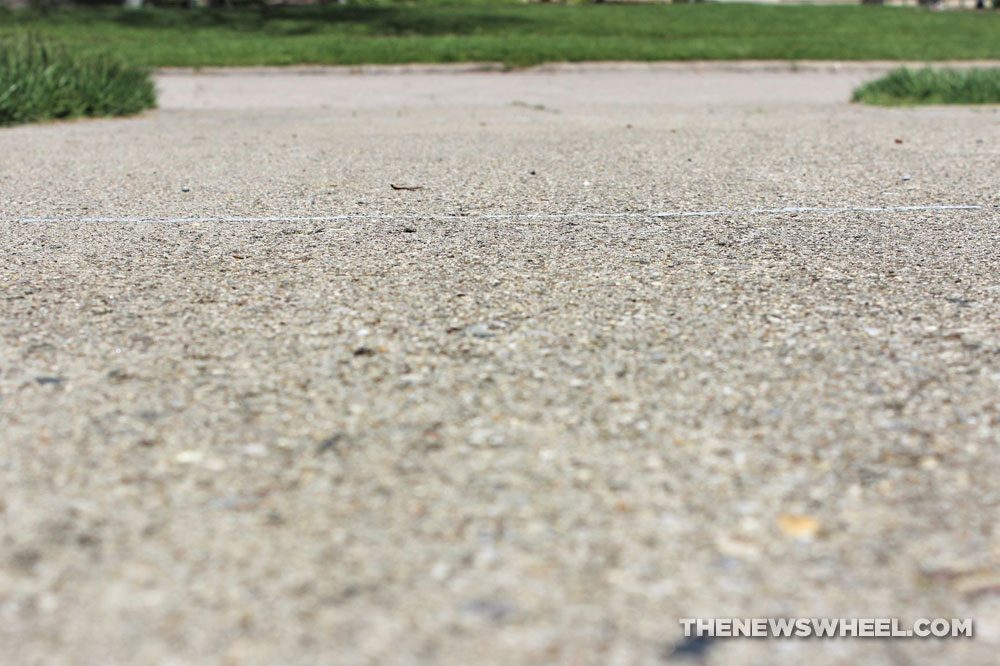 Photo: The News Wheel
Photo: The News Wheel
Just like damage that forms on public roads, your driveway can succumb to forces that cause it to tarnish, crack, and crumble. However, you can prevent damage to your driveway by properly maintaining and reinforcing it year after year. After all, a little extra work now is better than lots of extra work and expenses later.
Best Buys Announced: Kelley Blue Book recommendations for cars with the best resale value
A driveway isn’t as thick and durable as a garage floor. Unnecessarily parking your car, truck, or SUV on the driveway instead of the garage puts pressure on the concrete day after day, which could result in damage if the surface is already weakened. If possible, park your vehicle in the garage every day.
Consider parking any cars that don’t fit in the garage on the street curb, especially if you have a weak driveway that’s prone to cracking. If you do need to park on the driveway, center your vehicle in the driveway instead of setting it on the edge, which could chip off from the weight.
As nice as a tree-lined driveway may look, trees with shallow roots can rise too close to the surface and disrupt the foundation of your driveway (one of the worst things for a driveway is uneven, shifting ground underneath). Cut down large trees that are close to your driveway and replace them with tall bushes and shrubs. If you insist on having trees near your driveway, consider a barrier to stop the roots from growing underneath.
Purchase vs. Lease: Which option is better for your next car?

Corrosive fluids dripping from your car and sticking to the tires can damage the surface. Clean up spills as they happen, and wash the driveway yearly with an eco-friendly cleaner and power-washer.
Most people don’t seal their driveways, but this is essential maintenance you should be performing regularly. The frequency depends on the type of sealant you apply and how long it lasts, so make sure you’re reapplying a proper sealant at proper intervals to bolster the pavement’s resistance.
Even on a sealed, protected driveway, water can still weasel its way in. The porous surface lets water seep in, and if it freezes, the ice will expand and crack the pavement.
Make sure water doesn’t pool on the surface by digging tracks for runoffs on the side and installing a drain if necessary. Also, reroute any downspouts that pour rainwater directly onto the driveway so they travel to the lawn or dirt instead.
Tossing a handful of salt on a driveway or sidewalk to melt snow and ice during winter seems like the easiest solution to clearing it off, but the corrosive salt can harm the pavement and increase the amount of water on it.
To clean the driveway without damaging it, plow or shovel carefully by not scraping the surface. Then, what snow and ice remain can be made less slippery with sand, kitty litter, etc.
If your pavement does crack, make sure you fill the cracks immediately to prevent them from spreading further. If you perform this maintenance soon and often enough, though, you should prevent most major cracks from occurring in the first place — which is especially important if you just paid for a new driveway!
Aaron is unashamed to be a native Clevelander and the proud driver of a Hyundai Veloster Turbo (which recently replaced his 1995 Saturn SC-2). He gleefully utilizes his background in theater, literature, and communication to dramatically recite his own articles to nearby youth. Mr. Widmar happily resides in Dayton, Ohio with his magnificent wife, Vicki, but is often on the road with her exploring new destinations. Aaron has high aspirations for his writing career but often gets distracted pondering the profound nature of the human condition and forgets what he was writing… See more articles by Aaron.



